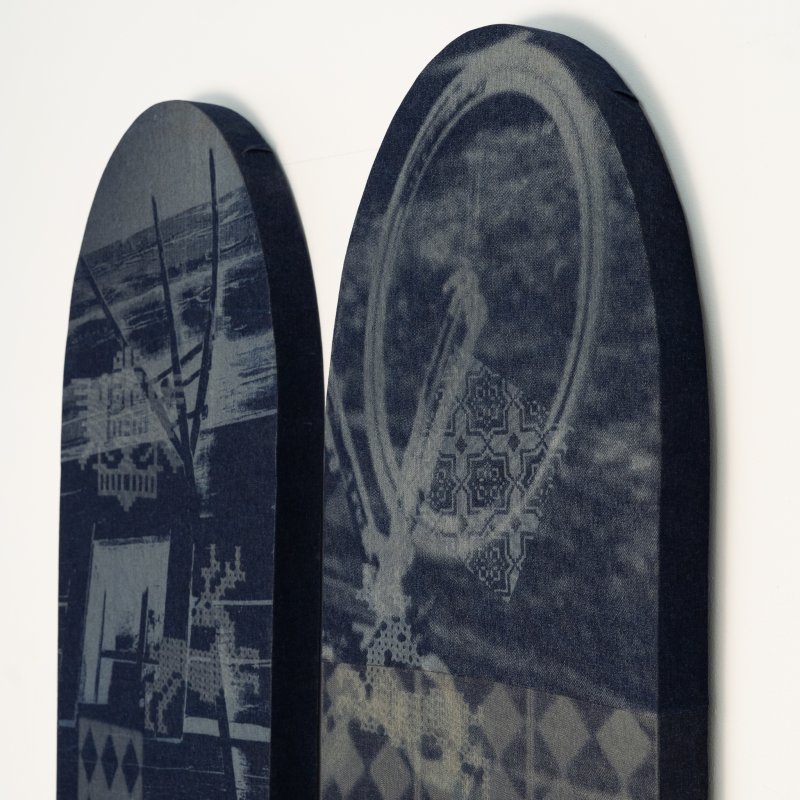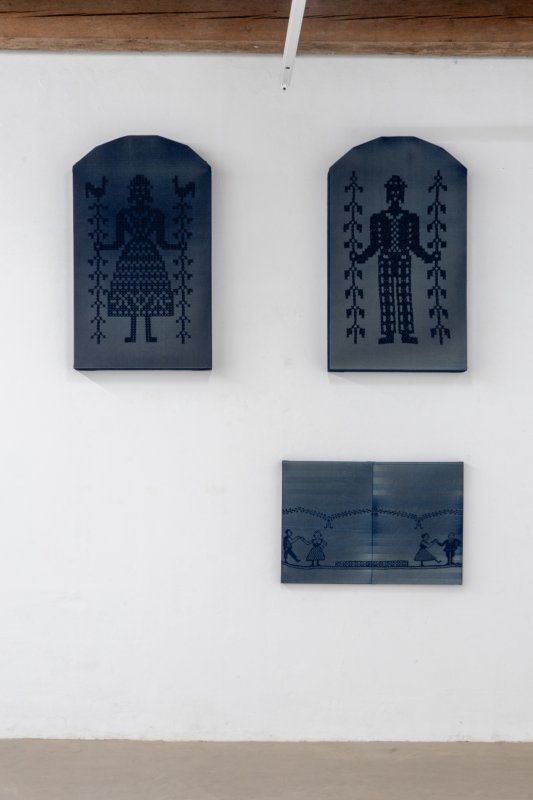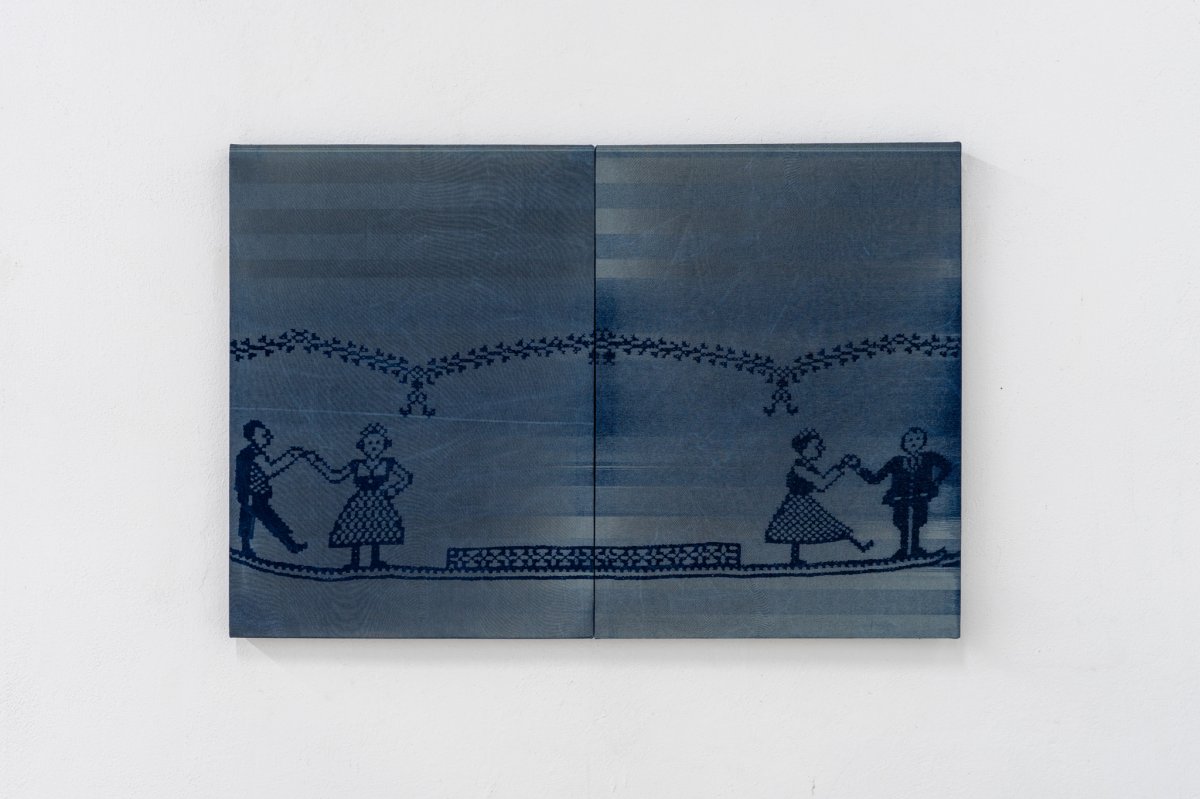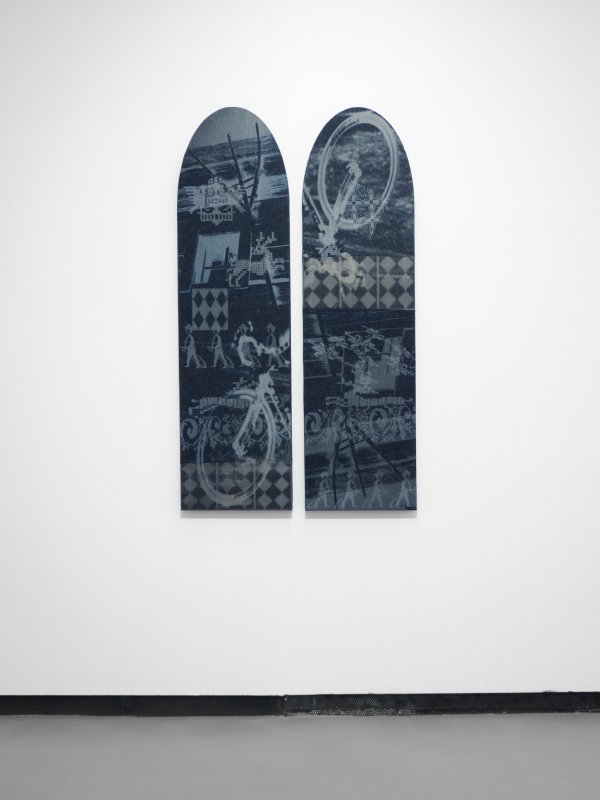
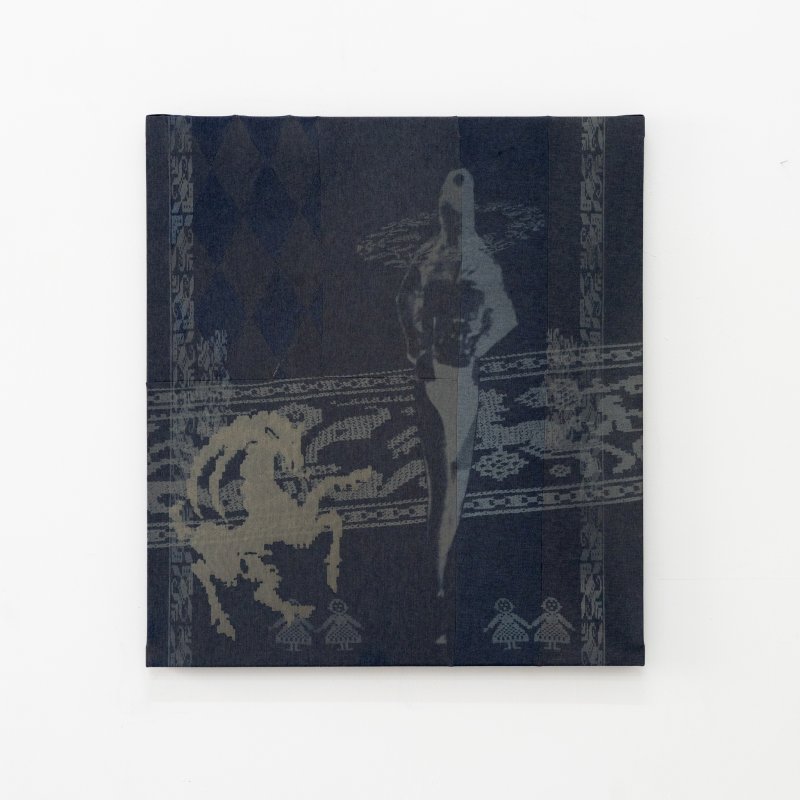
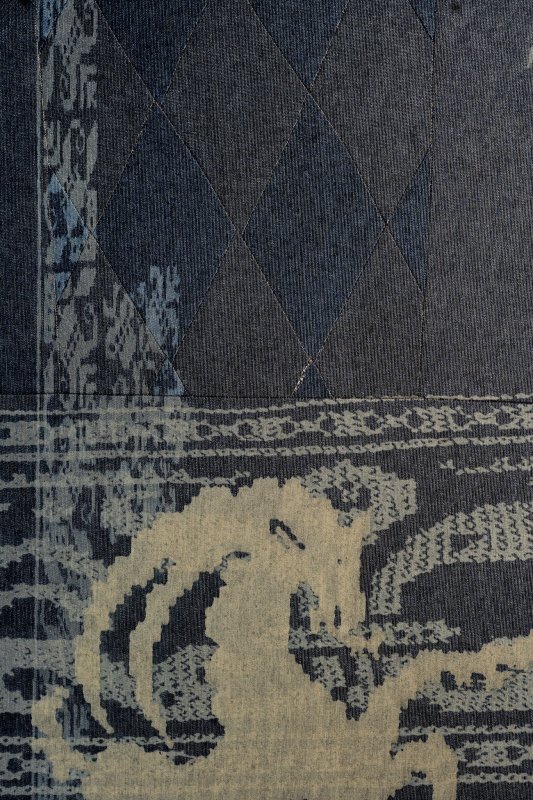
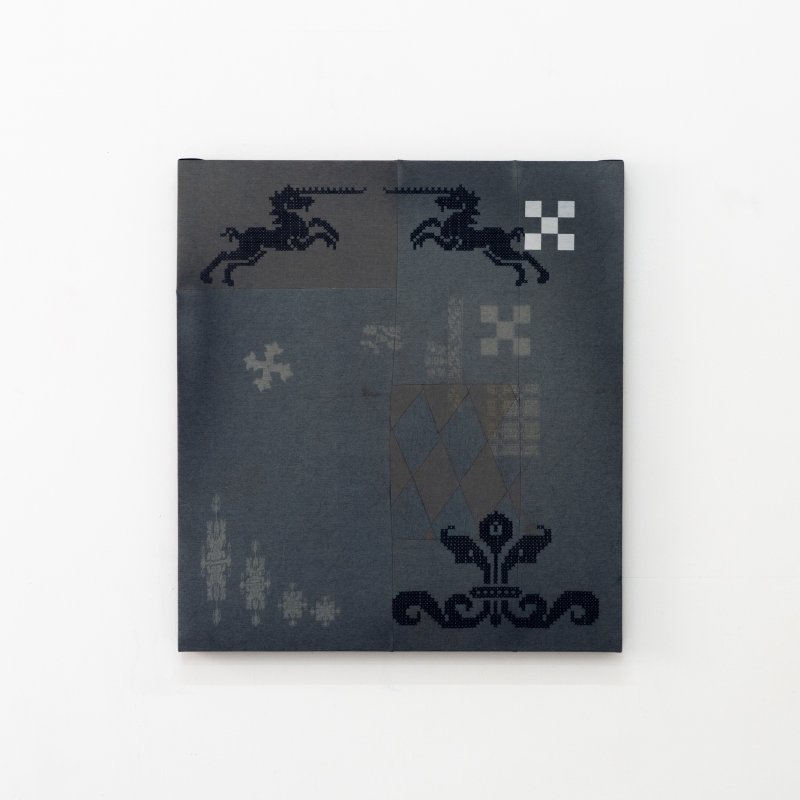
“ÜBERFELD” is the title of Lorenz Wanker’s series, which he dedicates to his Carinthian homeland. Growing up between Vienna and Carinthia, Wanker spent much of his childhood on his grandparents’ farm. In the series Überfeld, he juxtaposes these collected impressions of his rural origins with those of urban modernity. Using cross-stitch – a traditional local embroidery pattern – he explores the tension between innovation and tradition by imposing it onto denim fabric through a digital production technique: laser engraving.
Cross-stitch is a traditional craft that was practiced as a creative winter activity by rural women more than 150 years ago. During the winter months, when agricultural activity was limited but idleness was still unthinkable, women on the farm dedicated themselves to artistic occupations such as cross-stitch embroidery. These were designed as framed wall hangings for farmhouse parlors and were passed down through generations. The classic motifs of Carinthian cross-stitch are deeply rooted in customs and religion, often depicting rural life in harmony with nature and the agricultural calendar.
At the same time, blue jeans represent an equally old and tradition-rich material that has been in use for over 150 years. Originally conceived as workwear for gold rush miners, the fabric – and later the garment – became a consumer good and leisurewear for a broader population through the Western romanticism of Hollywood in the 1920s and 1930s. Following the end of the Second World War and the occupation of Europe by American soldiers, jeans finally made their way to Austria, where they quickly gained popularity, especially among the youth. In schools, where cross-stitch had once been taught, jeans became a rebellious symbol of youth against tradition and authority – everything cross-stitch once stood for – ultimately leading to the garment being banned. Jeans also emerged as a sign of women’s emancipation movements in the 1960s, as well as among hippies and anti-war activists, symbolizing solidarity with the working class.
While denim experienced a triumphant international rise – closely linked to the imposition of the American dream onto the Western world – the tradition of cross-stitch fell out of time, slowly but steadily fading into obscurity, becoming something that gathered dust in cardboard boxes in the attics of old farmhouses.
Cross-stitch is a traditional craft that was practiced as a creative winter activity by rural women more than 150 years ago. During the winter months, when agricultural activity was limited but idleness was still unthinkable, women on the farm dedicated themselves to artistic occupations such as cross-stitch embroidery. These were designed as framed wall hangings for farmhouse parlors and were passed down through generations. The classic motifs of Carinthian cross-stitch are deeply rooted in customs and religion, often depicting rural life in harmony with nature and the agricultural calendar.
At the same time, blue jeans represent an equally old and tradition-rich material that has been in use for over 150 years. Originally conceived as workwear for gold rush miners, the fabric – and later the garment – became a consumer good and leisurewear for a broader population through the Western romanticism of Hollywood in the 1920s and 1930s. Following the end of the Second World War and the occupation of Europe by American soldiers, jeans finally made their way to Austria, where they quickly gained popularity, especially among the youth. In schools, where cross-stitch had once been taught, jeans became a rebellious symbol of youth against tradition and authority – everything cross-stitch once stood for – ultimately leading to the garment being banned. Jeans also emerged as a sign of women’s emancipation movements in the 1960s, as well as among hippies and anti-war activists, symbolizing solidarity with the working class.
While denim experienced a triumphant international rise – closely linked to the imposition of the American dream onto the Western world – the tradition of cross-stitch fell out of time, slowly but steadily fading into obscurity, becoming something that gathered dust in cardboard boxes in the attics of old farmhouses.
